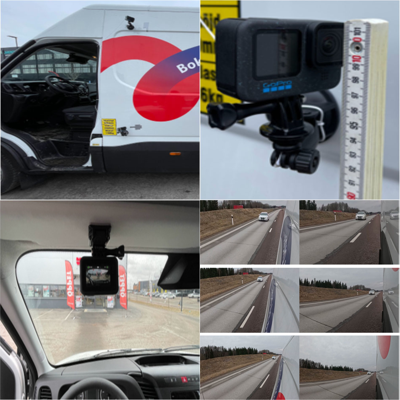
This study investigates how different camera perspectives presented in digital rear-view mirrors in vehicles, also known as Camera Monitor Systems, impact drivers’ distance judgment and decision-making in dynamic driving scenarios. The study examines (1) the effects of field of view and (2) camera height on drivers' ability to judge distances to rearward vehicles and to select safe gaps in potentially hazardous situations. A controlled lab-based video experiment was conducted, involving 27 participants who performed distance estimations and last safe gap selections using a simulated side-view mirror display. Participants viewed prerecorded driving scenarios with varying combinations of field of view (40°, 76°, 112°) and camera heights (1 meter, 2.3 meter). No significant effects were found for camera height, but wider field of views led to more accurate distance estimations. However, the use of a wider field of view also increased the risk of potentially dangerous overestimations of distance, as evidenced by the last safe gap results. This suggests that a wider field of view leads to the selection of smaller and potentially risky gaps. Conversely, narrow field of views resulted in underestimations of distance, potentially leading to overly cautious and less efficient driving decisions. These findings inform Camera Monitor Systems design guidelines on how to improve driver perception and road safety, to reduce accidents from vehicle distance misjudgments.
Felix Thulinsson, Niclas Söderlund, Shirin Rafiei, Bo Schenkman, Anders Djupsjöbacka, Börje Andrén, Kjell Brunnström, "Impact of Camera Height and Field-of-View on Distance Judgement and Gap Selection in Digital Rear-view Mirrors in Vehicles" in Electronic Imaging, 2025, pp 199-1 - 199-8, https://doi.org/10.2352/EI.2025.37.11.HVEI-199
 Find this author on Google Scholar
Find this author on Google Scholar Find this author on PubMed
Find this author on PubMed